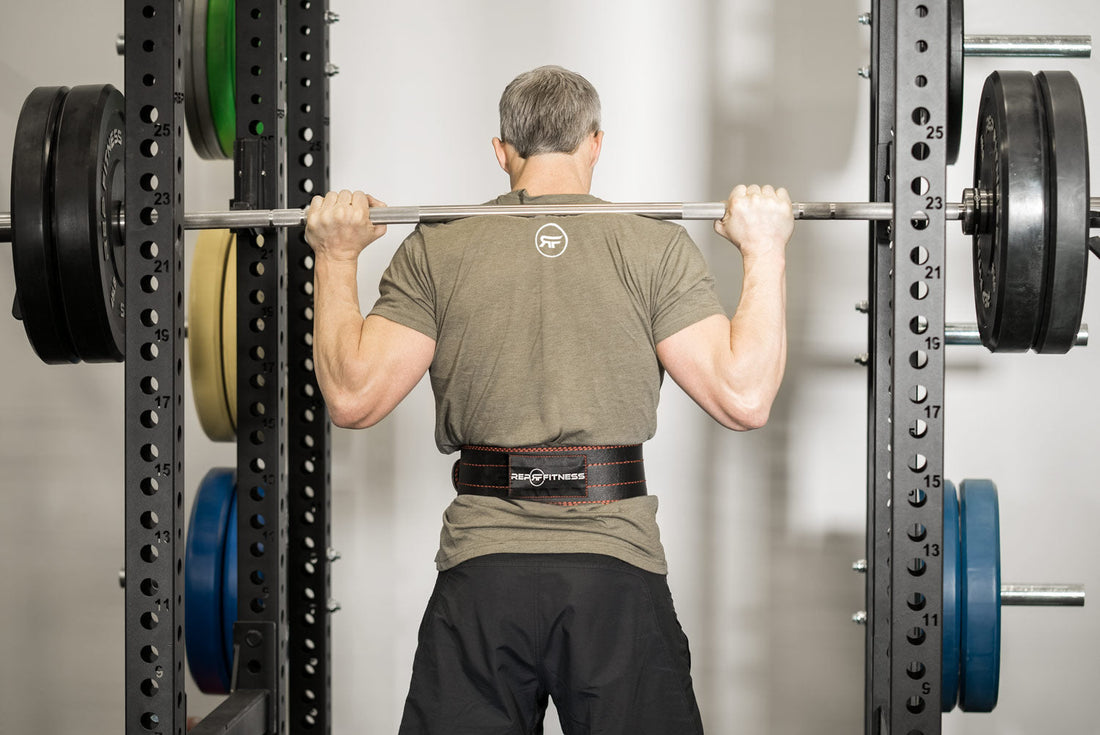
But let's "fail forward." As in fail properly. When pursuing failure on a lift, there is an optimal way to do it -- and a less optimal way that could actually end up harming you or your equipment.
Bailing from a heavy squat can be a daunting experience, especially if you're lifting without a spotter. While the best course of action is always to have a spotter and use safety equipment, there are times when you might find yourself in a situation where you need to bail on your own.
Here's how to safely bail from a heavy squat, protecting both yourself and your equipment.
The Importance of Spotters and Safeties in Strength Training
Spotters: Whenever possible, have a spotter when performing heavy squats. A spotter can assist in case you struggle with the lift, reducing the need to bail entirely. They provide a crucial safety net that can help you avoid injuries and damage to your equipment.Safety Bars: If you don’t have a spotter, using safety bars or pins is essential. These are designed to catch the barbell if you fail the lift. However, it's important to note that no safety equipment is built to endure constant bailing and throwing of weight. Regularly bailing can damage your equipment. Therefore, always load the proper amount of weight you can handle to minimize the risk of needing to bail. Safeties are for emergencies; they're not supposed to be a method of training.
The Risks of Bailing a Squat

How to Safely Bail from a Squat
If you find yourself in a situation where you must bail, here are some methods to do so safely:1. How to Bail a Back Squat:
- Set the Safety Bars: Ensure your safeties or pins are set just below your lowest squat depth. This allows you to lower the bar onto the safeties if you can't complete the lift.
- Drop the Bar: If you must bail, push the bar backward off your shoulders while moving your body forward. This will let the bar fall onto the safety bars without hitting you. Practice this movement with lighter weights to get comfortable with the process.
2. How to Bail a Front Squat:
- Set the Safeties: Similar to the back squat, set the safety bars at an appropriate height.
- Release the Bar: If you need to bail, quickly release the bar from your shoulders and let it drop forward onto the safety bars. Step back simultaneously to avoid any contact with the falling bar.
General Tips for Bailing a Lift
Stay Calm: In the moment of bailing, staying calm and focused is crucial. Panic can lead to poor decision-making and increase the risk of injury.
Protect Your Back: Always maintain a neutral spine and avoid twisting or bending awkwardly when bailing.
Minimal Damage: To cause the least damage to your house and equipment, avoid bailing directly onto the floor. Use safety bars or a power rack to catch the bar. Note the weight capacity of the various racks and safeties. The 5000 Series power racks have the highest weight capacity and are best for heavy lifters.
Remember physics class: When a weight is thrown or falling, the dynamic load it generates upon impact is significantly higher than its static weight due to the additional forces of acceleration and impact. This increased force can be several times the static weight, depending on factors like the height of the fall and the surface material.
Bottom Line

Bailing from a squat should always be a last resort. Proper preparation, including using spotters and safety bars, is essential to minimize the need for bailing. Always train within your limits and prioritize safety to protect yourself and your equipment. Remember, the goal is to train smart, not just hard.
By following these guidelines, you can ensure that if you ever need to bail from a squat, you can do so safely and with minimal risk to yourself and your equipment.

NEWSLETTER SIGNUP
Product launch information, promotions, blogs, and REP news.







